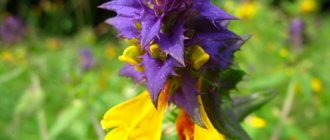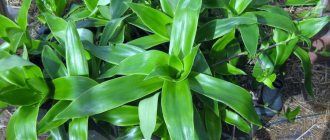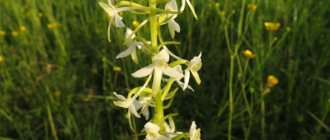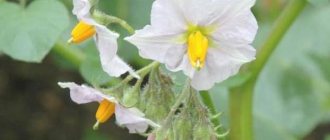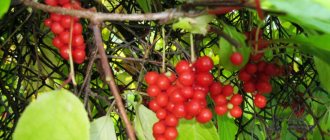Asparagus is the name given to a whole group of perennial shrubs that look like fir trees with soft needles. In our country, this plant is better known as asparagus - branches for decorating flower bouquets.
In culinary terms, asparagus refers to the young shoots of asparagus that are eaten. Many people mistakenly call asparagus soy (Korean) asparagus. In fact, this product has nothing to do with asparagus. Soy asparagus, or fuju, is the dried foam collected from the surface of soy milk by boiling.
Sometimes asparagus is the name for green beans, which is a legume plant and also has nothing in common with asparagus, except for a similar appearance and juicy green color.
What it is
Asparagus (asparagus) is a herbaceous plant of the Asparagus family. For culinary purposes, three varieties of asparagus are cultivated: white, green and purple. These shoots are not produced by different types of asparagus plants: they are distinguished only by the method of cultivation and the degree of maturity.
Content:
- What it is
- Chemical composition
- Beneficial features
- Possible harm
- Application in medicine
- Use in cooking
- How to select and store
- Conclusion
White asparagus
White shoots are considered a delicacy. White asparagus is harvested in March-June. To prevent the shoots from turning green during the growth process, the rhizomes of plants with shoots are hilled up and sprinkled with loose soil so that sunlight does not fall on them. This stimulates the growth of asparagus, but does not accumulate chlorophyll in it, so it remains white.
Green asparagus
Green shoots are harvested all year round. This variety of asparagus accumulates a lot of chlorophyll, which turns the shoots green. These shoots have a brighter taste than white shoots.
Purple asparagus
Purple shoots rarely appear on retail shelves. In order for the shoots to acquire this shade, they are grown in the dark, exposed to sunlight only a few times during the entire growth period. During the ripening process, anthocyanins accumulate in such asparagus, which give the shoots a characteristic bitterness. The peculiarity of purple asparagus is that it turns pale when cooked.
Caring for asparagus at home
Representatives of the asparagus family are very unpretentious and undemanding to living conditions. This fact confirms the widespread use of asparagus as an indoor and greenhouse crop, as well as the cultivation of asparagus as an agricultural plant. Particular attention should be paid to the regime of watering and lighting, since the main problem of asparagus - abscission of cladodes and baldness - is associated precisely with these factors.
Temperature and lighting
The temperature range that is comfortable for the plant is quite wide – from 14°C to 25°C. Moreover, in winter asparagus prefers a cooler room - 14°C - 17°C, and in summer it can withstand heat up to 25°C. Lower or higher air temperatures are contraindicated for asparagus.
Lighting is an important parameter when growing ornamental asparagus. The fact is that when there is poor lighting, the plant sheds its “leaves” - cladodes, and when there is excess sunlight, it turns yellow. It is important to stick to the golden mean: the place should not be too shaded, but without direct sunlight. This can be a western or eastern window sill (with additional shading) or a space in the back of the room (1-2 meters from the window).
[!] Lack of lighting negatively affects the formation of young shoots: the plant stretches out and stops bushing.
Watering and air humidity
The frequency and organization of watering is another important point that you should pay attention to when caring for the plant. Both overwatering and moisture deficiency have equally bad effects on the health of indoor asparagus - in both cases, yellowing and leaf fall begins. In addition, excessive watering can cause root rot, which will ultimately lead to the death of your green pet.
How to water asparagus correctly? Abundantly, but with good drying between procedures. Let's look at the process in detail: at one time it is necessary to properly spill the asparagus to the very bottom of the pot, then, after twenty to thirty minutes, drain the excess moisture from the pan. The time of the next irrigation should be determined by the degree of drying of the soil - the substrate should dry out by half or two-thirds of the bowl.
[!] Thanks to roots that accumulate moisture, asparagus is able to withstand short-term drought.
Some gardeners claim that asparagus often suffers from a lack of calcium. Regular tap water containing a large amount of calcium salts will help replenish the deficiency of this mineral. There is no need to settle or filter water for irrigation.
Asparagus, like many other houseplants, prefers high humidity. Homemade asparagus suffers especially badly from dry air in winter - when the central heating is turned on. To help the plant, the moisture level in the apartment microclimate can be increased in several ways:
- The classic option is spraying from a spray bottle. Spraying frequency - once a day in summer and at least twice a day in winter, during the heating season;
- You can place containers of water next to the asparagus. Water evaporation will increase the air humidity around the plant.
- Another way is to place the bowl in which asparagus grows on a wide tray filled with pebbles or expanded clay, and the pebbles need to be moistened from time to time.
Trimming
Flower pruning is a procedure regarding which the opinions of Russian flower growers are divided. Some say that pruning asparagus is necessary, as this rejuvenates the plant and allows it to form a compact and neat bush. Others believe that pruning harms the asparagus by causing it to spend too much energy growing new shoots. In fact, the truth, as usual, is in the middle - pruning can be done, but it must be done carefully and carefully.
The best time for pruning is early spring, when the plant awakens. The oldest, overgrown and bald shoots are selected for cropping. The stems are carefully cut to the required length: if you want new shoots to begin to develop from the old shoot, you need to leave about 20 cm with several internodes.
[!] On Meira's asparagus, branching from an old shoot is impossible; the plant develops only from the root.
Soil and fertilizing
The soil for growing asparagus must be nutritious, loose, water- and breathable, with a low acidity level (pH 5.5 - 7.5). Of the ready-made substrates, universal soil and soil for ferns with the addition of vermiculite are best suited.
In addition, you can prepare a soil mixture yourself from garden soil (can be replaced with leaf and turf soil), humus and sand (in proportions 2:1:1).
At least a third of the total volume of the pot should be occupied by a drainage layer. Expanded clay, broken brick, small pebbles, and clay shards are good for drainage. Thanks to drainage, excess moisture will not stagnate in the pot and negatively affect the root system.
The best time to fertilize a green pet is spring and summer, autumn and winter, during the dormant period, the plant practically does not need fertilizing. Universal mixtures are usually used as fertilizer, in the concentration recommended by the manufacturer. In summer, for intensive growth of green mass, you can try nitrogen fertilizing.
[!] Use nitrogen fertilizers only in summer or spring, during the growth period. Applying nitrogen at other times of the year will prevent the plant from going dormant.
[!] Nitrogen fertilizers in combination with a too dark location can provoke the appearance of overly elongated, bare shoots.
Transfer
Since asparagus grows and develops quite intensively, it needs an annual transplant. The time of year most suitable for replanting is early spring, however, if the plant has grown too much and the roots no longer fit into the pot, you can replant asparagus at any time of the year.
The best and most gentle way of replanting is transshipment: the plant, along with the old earthen ball, is moved into a new container, the empty spaces are filled with fresh substrate.
Often, asparagus roots are very intertwined, and it is impossible to get a flower for replanting without damaging them. In this case, the roots need to be carefully trimmed, the sections sprinkled with activated carbon and the asparagus moved to a new bowl.
[!] Do not plant young asparagus in a large pot “to grow.” Too much soil provokes intensive development of the root system to the detriment of young shoots.
Reproduction
At home, asparagus reproduces in three ways:
- dividing the bush,
- cuttings,
- seeds.
Dividing the bush is a method used in the spring, when replanting asparagus. The old plant, after intensively shedding it with water, is carefully removed from the pot and divided into two or three parts, each of which should contain a sufficient number of roots and at least one growth point with young shoots. The dense root ball is cut or carefully torn, the cut areas are sprinkled with crushed coal or “Kornevin”. After the procedure, each new plant can be planted in a separate container. Further care is the same as for adult asparagus, with the exception of fertilizing, which can burn the root cut areas.
[!] Dividing a bush is a painful and traumatic operation for the plant. Usually, after division, asparagus get sick for some time.
Like most other houseplants, asparagus can be propagated using cuttings. For cuttings, adult healthy shoots about 15 cm long are cut and placed in a peat-sand mixture.
To make the cuttings take root faster, you can create a small greenhouse by placing containers with shoots in a bag or under a glass jar. Ventilation should be carried out once a day by removing the covering structure.
The soil mixture for rooting should always be slightly moist, and the air temperature should not fall below 22°C.
The best time to root cuttings is early spring. It may take at least one to two months before the first roots appear.
Propagation by seeds is a rather exotic, but still quite working method. For sowing, purchased seeds or seeds obtained from ripened asparagus berries are used.
After assembly or purchase, the seed material is soaked for two days in water at room temperature, and then buried in a mixture of sand and peat and covered with plastic film or glass, which is periodically removed for ventilation. The sowing depth should be very small, otherwise the seeds will not germinate.
[!] The best way to water planted seeds is spraying with a spray bottle. This method eliminates soil erosion.
After the seeds have sprouted and grown by about 10-15 cm, they can be transplanted into separate small pots (or plastic cups), and then, after about 3-4 months, into larger containers.
Diseases, pests and growing problems
The most common disease that occurs on asparagus is root rot. The appearance of this disease is associated with improper, too intense watering of asparagus. Root rot is a very dangerous disease that can lead to the death of a plant, so it is important to notice the symptoms in time and take the necessary measures.
The most common parasite that attacks asparagus is the spider mite. This pest is difficult to notice, its size is too small, but as soon as the first signs of the presence of the insect appear, you need to begin a merciless fight against the pest. If the spider mite colony is small, folk remedies will help - infusion of soap, garlic, onion peels. In particularly advanced cases, modern insecticides - Actellik, Fitoverm, Nero - will come to the rescue.
[!] The edges of the cladodes of sickle-shaped asparagus, attacked by spider mites, become distorted and warped. Unfortunately, even after cure, the normal shape is not restored, and healthy “leaves” can only be seen on fresh shoots.
There are several main problems that gardeners face when caring for asparagus. Let's look at them in more detail:
Leaf fall, yellowing of the “leaves” - cladodes - the reasons for this common phenomenon can be very different: too dry air, excess sunlight, too high a temperature. In general, asparagus responds to almost every unfavorable event by yellowing and shedding of cladodes. Finding out what exactly caused this phenomenon is the task of the gardener.
Sluggish, drooping shoots are a dangerous symptom indicating the possible development of root rot. It is necessary to carefully examine the root ball for the presence of rot and, if the plant is sick, cut off the rotten areas, treat the cut areas, replace the soil and transplant the asparagus into a new container.
The pallor of the plant, a large number of elongated shoots is most likely due to insufficient illumination of the location of the asparagus. It is necessary to move the flower to a sunnier place.
Chemical composition
Asparagus is a very healthy and low-calorie product. The shoots of this plant contain up to 92-95% water, as well as:
- carbohydrates - up to 5%;
- proteins - up to 2%;
- vitamins;
- minerals;
- saponins;
- coumarins;
- organic acids;
- phytosterols.
Asparagus is a storehouse of vitamins and minerals. There is an opinion that white shoots are healthier than green and purple shoots. This statement is only true of purple asparagus. But green shoots are unfairly accused: they contain more vitamins and minerals than the white vegetable. They also contain more water-insoluble fiber compared to other varieties: 100 g of raw green vegetables contains up to 10-12% of the body’s daily requirement.
Asparagus is a source of the polysaccharide inulin, which has a hypoglycemic effect.
Asparagus proteins are complete in composition, as they consist of all essential amino acids. However, their quantity in this vegetable is not enough to cover the daily requirement. 100 g of raw asparagus contains up to 10 mg of purine bases, which does not exceed 10% of the daily value, so asparagus can be consumed by gout patients, but in limited quantities.
This vegetable is rich in aspartic acid, an amino acid that improves nervous activity and lowers blood pressure.
Vitamins in green shoots
| Name | Content per 100 g, milligrams |
| Provitamin A (beta-carotene) | 0,5 |
| Lutein, zeaxanthin | 0,7 |
| Vitamin B1 (thiamine) | 0,1-0,14 |
| Vitamin B2 (riboflavin) | 0,1-0,14 |
| Vitamin B4 (choline) | 0,016 |
| Vitamin B5 (pantothenic acid) | 0,27-0,3 |
| Vitamin B6 (pyridoxine) | 0,1 |
| Vitamin B9 (folic acid) | 0,05 |
| Vitamin PP (nicotinic acid) | 1,4 |
| Vitamin C (ascorbic acid) | 20,0 |
| Vitamin E (alpha tocopherol) | 2,0 |
| Vitamin K (phylloquinone) | 40,0-42,0 |
| Vitamin U (methylmethionine sulfonium) | 210,0-250,0 |
Asparagus shoots contain a record amount of vitamin U, an anti-ulcer vitamin-like substance: 100 g of green asparagus is enough to cover the body’s daily requirement. It also contains a lot of vitamin K (more than 35%), vitamin C (20-22%), beta-carotene (over 10%), lutein and zeaxanthin (more than 12%).
The mineral composition of asparagus is no less rich.
The green shoots of this plant contain silicon (more than triple the daily value of 100 g), rubidium (29%), boron (28%), copper and sulfur (19% each), cobalt, phosphorus, iron, iodine, chlorine, potassium, calcium , manganese, selenium. Mineral composition
| Name | Content per 100 g, milligrams |
| Potassium | 200,0 |
| Calcium | 25,0-30,0 |
| Silicon | 100,0 |
| Magnesium | 14,0 |
| Sodium | 2,0 |
| Sulfur | 190,0 |
| Phosphorus | 52,0-97,0 |
| Chlorine | 160,0 |
| Bor | 0,02 |
| Iron | 2,2 |
| Iodine | 0,015 |
| Cobalt | 0,002 |
| Copper | 0,19 |
| Manganese | 0,16 |
| Rubidium | 0,029 |
| Selenium | 0,002 |
Asparagus saponins have an expectorant effect, coumarins improve blood fluidity. The shoots contain a lot of phytosterols (up to 50% of the daily value) - plant analogues of cholesterol. Purple asparagus sprouts are high in anthocyanins, which exhibit powerful antioxidant and anti-inflammatory properties. Asparagus is considered an effective aphrodisiac.
The energy value of 100 g of raw vegetable is 20-21 kcal, so it is classified as a dietary product.
The dangers of keeping a home
Ornamental plants bloom beautifully, but can be dangerous for animals and children. The cells of the berries contain toxic compounds .
After flowering, small multi-colored balls form on the branches of the plant. Depending on the type, the fruits can be blue-black, red or orange.
When ingested, asparagus berries cause irritation of the gastrointestinal mucosa and various consequences for health and well-being. Saponins are found in green parts of plants in lower concentrations than in berries.
Important! When eating asparagus berries, abdominal pain, diarrhea, and vomiting occur.
The intensity and strength of symptoms of poisoning from asparagus berries depends on the person’s weight, state of health, and age. In case of intoxication with saponins, the victim should provide first aid, give enterosorbents, and provide plenty of fluids. To avoid complications, you need to see a doctor for an examination.
Beneficial features
Asparagus exhibits many beneficial effects on the human body. Regular consumption of shoots of this vegetable:
- reduces blood pressure;
- normalizes heart rhythm;
- reduces the concentration of cholesterol in the blood;
- has a diuretic effect;
- stimulates intestinal motility;
- heals erosions and ulcers on the walls of the digestive organs;
- improves food digestion;
- removes toxins and waste from the intestines;
- improves blood fluidity;
- reduces the concentration of glucose in the blood.
Asparagus is also useful for normalizing brain function, since the substances contained in it:
- stimulate cerebral circulation;
- restore the myelin sheath of nerve endings;
- improve the conductivity of nerve impulses;
- improve mood;
- promote thought processes;
- relieve fatigue.
Fiber, inulin and B vitamins contained in this vegetable restore the intestinal microflora, prevent fermentation and putrefactive processes in it, and increase immunity.
Asparagus saturates the body with vitamins and minerals, so it is useful for consumption:
- in childhood and adolescence;
- during pregnancy and breastfeeding;
- in the recovery period after illnesses and operations;
- during intense physical activity, for example, among athletes;
- during periods of increased brain activity (during exams, sessions, during stressful situations).
Green shoots contain a large amount of chlorophyll - plant hemoglobin, which promotes hematopoiesis, saturates the human body with oxygen, and increases physical activity.
Asparagus propagation
Florists use three types of asparagus propagation:
Propagation of asparagus by cuttings
Propagation by cuttings - use shoots at least 15 cm long. A cut adult shoot is planted in a container with wet sand and covered with a transparent bag. Place the structure in a bright place with a temperature not exceeding 22 degrees Celsius, carry out regular ventilation and humidification. After a month, the established plant is transplanted to a permanent place.
Reproduction by dividing the bush
Reproduction by dividing the bush is the easiest and fastest way. When replanting, the bush is divided into parts with a sharp knife and each part is planted in a separate pot.
Growing asparagus from seeds
The best time to sow seeds is, of course, early spring. Seeds - purchased in a store or extracted from fruits - are soaked for two days, placing them in a damp piece of cloth. After swelling, place in a container with moist soil and lightly sprinkle on top. After this, cover with a transparent lid or bag and place on a warm, well-lit windowsill. Regularly ventilate and moisten the soil. After the emergence of seedlings, remove the cover. Seedlings are transplanted after they reach a height of ten centimeters.
Possible harm
Despite all its beneficial properties, asparagus is highly allergenic, so it should not be consumed by allergy sufferers and patients with bronchial asthma. Due to the ability of asparagus to stimulate the secretion of digestive juices, its use is not recommended for people with high stomach acidity and peptic ulcer disease during an exacerbation.
It is recommended to limit asparagus consumption in case of inflammatory joint diseases, urolithiasis and gout.
Diseases and pests
Asparagus is an unpretentious plant, therefore, with good care, the plant is practically not susceptible to various diseases.
Only violations in agricultural technology can cause the disease; once the cause is eliminated, the plant quickly restores its lush greenery and health. Reasons causing changes in the appearance of plants:
- Asparagus leaves turn yellow and fall off - irregularities in watering, poor lighting, high temperature, lack of organic matter.
- Brown spots on shoots - this is only possible with severe burns from direct sunlight.
- The leaves have become pale, the stems are long and weak - lack of lighting or excess nitrogen fertilizing.
- Asparagus is wilting - most likely root rot from excess moisture. An urgent transplant is needed with a complete revision of the roots.
Also, all these signs can also be evidence of an attack on a weakened plant by pests: spider mites, thrips or scale insects. You can overcome all these pests in a simple way - dilute a sachet or tablet of Intavira in a bucket and bathe the plant head. For very long vines, place in a bath and spray thoroughly.
Application in medicine
Doctors recommend including asparagus in therapeutic diets for various diseases.
For diseases of the heart and blood vessels
Aspartic acid, vitamins and minerals from asparagus have a positive effect on the condition of the heart and blood vessels, which is useful for:
- arterial hypertension;
- angiopathy;
- arrhythmias;
- atherosclerosis;
- coronary heart disease;
- after heart attacks;
- varicose veins;
- thrombophlebitis;
- phlebothrombosis.
Regular consumption of this vegetable reduces cholesterol concentrations, reduces permeability and increases the elasticity of vascular walls, which is useful for people with a family history of cardiovascular diseases.
For diseases of the gastrointestinal tract
Due to the rich vitamin and mineral composition and the content of water-insoluble fiber in asparagus, the presence of this plant in the daily menu is indicated for:
- gastritis;
- cholecystitis;
- hepatitis;
- biliary dyskinesias;
- enteritis;
- colitis;
- malabsorption syndrome;
- chronic constipation;
- intestinal dysbiosis.
Asparagus has a wound-healing effect on erosions and peptic ulcers of the stomach and duodenum in remission.
For kidney pathologies
For diseases of the urinary system, eating this vegetable reduces swelling and relieves inflammation, therefore it is recommended for use by patients with:
- glomerulonephritis;
- pyelonephritis;
- cystitis;
- urethritis.
Eating green asparagus dishes for men prevents the occurrence of prostatitis and reduces existing inflammatory processes in the prostate gland.
For metabolic and hormonal disorders
The polysaccharide inulin contained in asparagus has a hypoglycemic effect, so this vegetable is recommended for consumption by people suffering from diabetes. Antioxidant compounds of asparagus (anthocyanins, tocopherols, retinol) strengthen blood vessels and prevent the development of diabetic angiopathy.
Chlorophyll, available in large quantities in green sprouts, improves hematopoiesis, increases the level of hemoglobin in the blood, and saturates the body's cells with oxygen. Thus, asparagus fights anemia and exhaustion.
Calcium, which is part of the succulent shoots, stimulates the production of parathyroid hormone - the hormone of the parathyroid glands. Iodine improves thyroid function.
For diseases of the nervous system and sensory organs
Asparagus is indicated for consumption to improve mental activity, as well as for patients with pathologies of the central nervous system and sensory organs:
- senile dementia;
- after strokes;
- Alzheimer's disease;
- multiple sclerosis;
- macular degeneration;
- decreased visual acuity;
- “night” blindness.
During pregnancy
It is useful to include asparagus in the diet of women expecting a child. Green asparagus is especially useful during this period because:
- fiber normalizes stool;
- asparagine improves fetoplacental blood circulation;
- tocopherols contribute to the proper development of the fetus;
- iron and chlorophyll prevent the occurrence of anemia in pregnant women.
If you are overweight
The low calorie content of asparagus sprouts, due to the large amount of water-insoluble fiber they contain, helps combat hunger in overweight people and those on a diet. In addition, fiber in the intestines swells and increases intestinal contents, which helps accelerate intestinal motility, preventing constipation.
Purple asparagus is useful for older people to consume, as its anthocyanins actively fight free radicals, which accelerate the aging process of the body.
There is literary information about the benefits of asparagus for male potency.
Asparagus species with photos
The most common types in indoor culture:
- A. densely flowered (Sprenger).
- A. Meyer.
- A. pinnate.
- A. asparagus-shaped.
- A. sickle-shaped.
Sprenger's densely flowered asparagus (Asparagus densiflorus sprengeri) is a multi-branched ampelous (bushy) plant. It has thickened roots and light green leaves, which have a second name - cladodes, growing evenly along the shoots.
With the transition to adulthood, the stems bend in an arched manner and take on a more drooping appearance. After flowering, which is caused by white-pink fragrant aromatic flowers, bright red fruits appear, giving the plant a decorative appearance. This species is a lover of bright sunlight.
Meyer's asparagus (Asparagus meyeri) is a shrub with pubescent shoots reaching a length of 500-600 mm. The needles on the shoots are placed quite tightly, similar to a dish brush or the fluffy tail of an animal. Flowering occurs in summer.
The flowers are small, white, with a pleasant aroma. The fruit is a bright red berry. The plant has a fairly powerful root system. Therefore, he needs an annual transplant. A. Meyer is propagated by seeds, which take a very long time to germinate and by dividing the bush.
Attention! A. Meyer is not pruned or treated with pest control agents.
Cirrus asparagus (Asparagus plumosus) comes from South Africa. Widely used for landscaping, in making compositions and bouquets. The shoots of the plant are needle-shaped, thin, collected in paniculate formations, which are located on a flexible, thin, often curly stem. Flowering occurs only in plants older than 10 years. The berries are blue-black and fall quickly. Prefers dimly lit rooms.
Asparagus asparagus (Asparagus asparagoides) is a fast-growing plant with sickle-shaped bright green, large and shiny, oval leaves (5 cm long). The leaves are located on long, up to 1 meter, stems. The flowers are white, small, fragrant. The fruit is a berry with an orange aroma. A. asparagus does not tolerate both low (at least 12 degrees) and high temperatures for a long time.
Replanting is carried out if necessary, using a mixed or universal substrate containing humus and compost. It is recommended to add a little sand to the soil. In natural conditions, the plant’s appearance is more like a shrub, which has creeping stems up to 1.7 meters in length. It is recommended to use a support for light green stems at home.
Crescent asparagus (Asparagus falcatus) is an evergreen, herbaceous, climbing vine. The leaves of the plant are large and crescent-shaped. The edges of the leaves are corrugated and may have spines. Green leaves will become darker with age. The flowers are collected in small inflorescences. This species is thermophilic, but does not tolerate heat.
Propagated by division and seeds. For replanting, which is done once every 1-2 years, neutral (slightly acidic) turf, deciduous soil with the addition of sand is used. A. crescent is liked by florists who use graceful shoots to decorate flower arrangements.
Use in cooking
The taste of boiled asparagus can be compared to a mixture of chicken fillet, cauliflower and nuts. Due to its interesting taste, asparagus sprouts are popular in European and Asian cuisine. They are prepared in different ways:
- boil;
- steamed;
- baked;
- fried.
Asparagus goes well with eggs, bacon, and seafood. In Italian cuisine it is added to pasta and pizza. In French cuisine it is served as a side dish with a creamy sauce. Sliced asparagus is often included as an ingredient in various salads.
Young succulent sprouts of this plant can be easily spoiled by improper cooking. To prevent this from happening, after cooking, the shoots must be quickly removed from the saucepan or frying pan and immediately placed in a container prepared in advance with ice or ice water. This will allow you to stop the cooking process of the vegetable in time.
In this way, you can preserve not only the color of asparagus (especially green), but also its taste and elasticity. Ideal sprouts should remain crispy after cooking.
Signs and superstitions
The indoor plant asparagus pinnate is loved by gardeners not only for its lush exotic crown, but also for its magical properties. It is believed that the flower is able to neutralize the negative energy that appears in the home or office.
Many people notice that a flower can defuse a nervous situation, calm conflicts in large and noisy companies, and relieve tension after a hard day. A person who grows asparagus is not subject to fussiness, finds peace and learns to control emotions.
There is also an unpleasant belief associated with asparagus: if a flower suddenly dies, then someone living in the apartment may suffer the same fate.
How to select and store
It is better to buy fresh white asparagus during its growing season (March-June); green asparagus can be purchased all year round. When purchasing a fresh vegetable, you should inspect it carefully. There is no need to purchase pale green, yellow, spotted specimens. The sprouts should be elastic to the touch, and the leaves located along them should be tightly pressed to the stem.
Best materials of the month
- Coronaviruses: SARS-CoV-2 (COVID-19)
- Antibiotics for the prevention and treatment of COVID-19: how effective are they?
- The most common "office" diseases
- Does vodka kill coronavirus?
- How to stay alive on our roads?
If you rub two fresh shoots against each other, you will hear a sound similar to rubbing your finger on clean glass. The occurrence of such a sound is the main sign of freshness of asparagus.
Fresh shoots are stored in the freshness zone of the refrigerator, wrapped in a damp cloth, for no more than two days.
You can cook fresh or frozen asparagus. Since fresh sprouts lose their consistency and taste after freezing, only boiled sprouts are frozen. You should not buy frozen asparagus: it is better to prepare it yourself. To do this, fresh shoots need to be boiled a little (white ones for one, green ones for three minutes), cool on ice, dry, and then freeze in bunches of 5-6 pieces. Frozen boiled vegetables can be stored for 6 months at a temperature of -18°C.
How does a plant reproduce?
In nature
Birds feeding on asparagus berries carry its seeds over vast distances , thereby helping its spread. Quickly adapting to new conditions, the plant expands its growing area.
For example, ornamental South African species known throughout the world, brought to areas of Australia, America or other African countries, took root so quickly that today they are considered weeds.
And there are cases when the plant occupies the area of agricultural crops. In this situation, a struggle on a national scale begins.
The exception is the wild species of asparagus, which is called “the cure for a hundred ailments.” This species is close to extinction for its healing properties.
At home
They are usually propagated in the spring by dividing the bush during replanting. An adult plant is replanted every year, a young one - once every 3 years. You can also use the cutting method.
Seed propagation is also very effective. Seeds can be sown in any month. The main thing is that the soil with the seeds is always moist.
